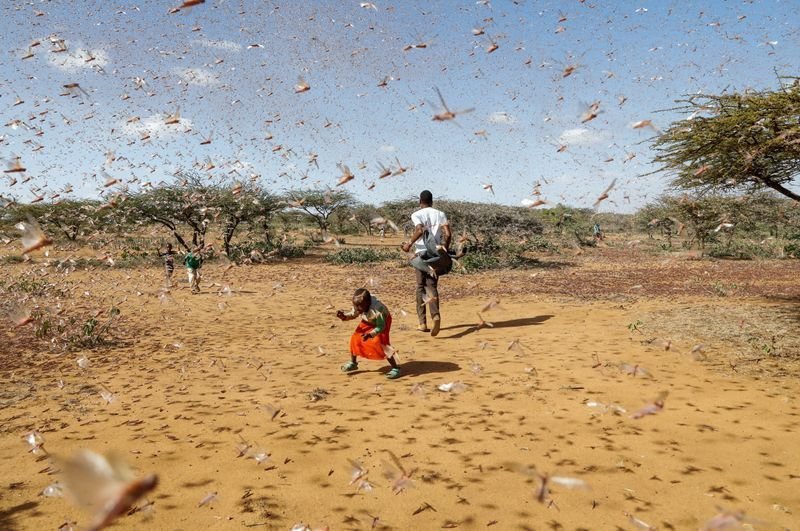When life gives you lemons, best make lemonades out of them. Kenyan farmers in the Laikipia region know well how to put this saying into action. Locusts infestation in the region has rendered farmers into states of hopelessness. However, this is not for long. Similarly, the insects are destroying the crops; they will fully nurture the ground to grow the next set of crops. Moreover, livelihoods will be put back on track through locust harvesting. Capitalists are looking forward to transforming the locusts into animal feed and manure and help salvage Laikipia farmers’ hope. These capitalists known as the Bug picture may answer the wailing farmers mourning the destruction of their crops by locusts. A pest that has been extinct for decades now.
Climatic conditions favoring Locusts Infestation
Scientists approve that the climatic conditions in the Laikipia region favor the pests’ manifestation. Just before the pandemic, locusts took hold of most regions in the African countries. The countries in East Africa and around the Horn of Africa are experiencing a climate change that apparently is attracting pests. The warm seas create rains on land that majorly facilitate the growth of the eggs into locusts. Then comes the cyclones, which help in dispersing them.
Locusts animal feed and manure
The Bug picture is looking forward to involving the communities of Laikipia, Isiolo, and Samburu. This will involve harvesting the insects. Later, they will be taken for milling to be transformed into animal feeds and manure. Laura Stanford, the founder of The Bug picture, affirms that the project serves to help the farmers whose crops have been cleared. The foundation is there to help the community understand that the locusts are just another cash crop as much as it serves destruction.
How the Locust harvest helps the community
A swarm of locusts is known to travel for a distance of 150km in a day. That is 93 miles. A square kilometer holds 40 to 80 million locusts. Quite a number. However, these pests are manageable at night. They usually rest in trees and shrubs hence easy for them to harvest.
The start-up then pays the community members 50 Kenyan shillings per kg of the locusts. This is about 0.4566 dollars. Between February 1st and 18th, the start-up managed to attain 1.3 tons of locusts. Later, they go through the milling process, where powdered animal feeds, and organic fertilizers are manufactured.
More:
- Kenya’s Desert Locust Hunters Declare War on Locusts
- Kenya’s Linda Mama’ Health Insurance Saves Lives


















